Indoor Plants – To Improve Indoor Air Quality
Indoor plants can improve indoor air quality to keep us fresh & healthy. We have collected 10 best plants to improve indoor air quality.
Admiring the beauty of plants and relaxing over a cup of tea in a garden is a dream many posses but aren’t fortunate enough to fulfil this dream.
A huge garden of one’s own especially in metropolitan areas is a luxury and only few are lucky to get one.
But wait, even you can be lucky and have your own very personal green corner!
Yes, you can! You don’t need a huge terrace or balcony. All you need is a little space right inside your home for these beautiful and useful indoor plants.
“A beautiful plant is like having a friend around the house.”— Beth Ditto
A houseplant or indoor plant is one which is grown in residences and workplace. These are commonly grown for decorative purposes, but studies have shown that they provide numerous benefits. Recently they are also called as Air purifier plants by environment enthusiasts.
Learn More about Introduction to Indoor air pollution
Benefits Of Indoor Plants
Creating a green corner does not simply mean adding greenery. The indoor plants interacts with your body and mind in ways that helps you to enhance the quality of life.
Refresh air.
Plants are known to absorb carbon dioxide and release oxygen during photosynthesis, while we do the exact opposite when we respire. We absorb oxygen and release carbon dioxide.
Thus incorporation of plants in interior spaces can increase oxygen levels and reduce carbon dioxide level.
It is also a known fact that during night, photosynthesis ceases and plants typically respires like humans, i.e. they absorb oxygen and release carbon dioxide. But, few plants like orchids, succulents do just the opposite. They continue their process of taking in carbon dioxide and releasing oxygen even during night.
Learn More about Air purifiers for Home and their benefits
Placing air purifier plants in bedrooms will help refresh air during night helping us having a good night sleep.
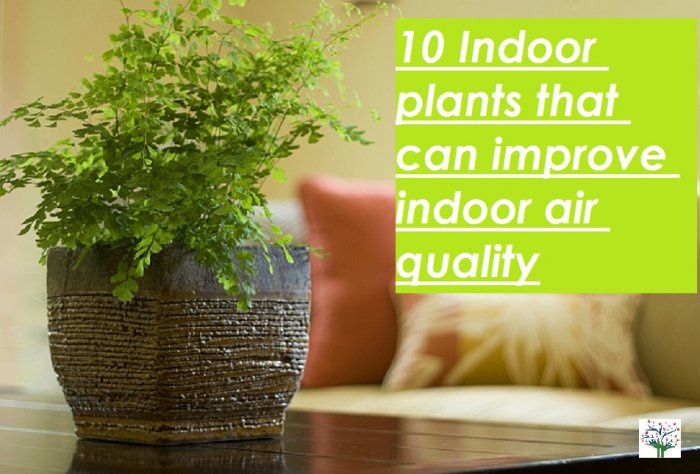
Natural humidifier and cooler.
We all love to save money, don’t we? So why go for buying expensive humidifiers and coolers which are not so ecofriendly, when we have an excellent inexpensive option of indoor plants.
As a part of photosynthesis, plants release moisture (vapour) into the atmosphere. The process by which they release it is known as transpiration and due to this plants can act as humidifiers and coolers.
They help maintain the humidity and temperature to optimum range for human health.
Areca palm is one such plant which releases moisture into a room, making it particularly welcome in dry months. Plants such as succulents and cacti which retain water are not very good humidifiers.
Aloe Vera, Areca palm, Ficus trees, Fern are excellent examples of best indoor plants providing cooling effect.
Natural air purifier.
It has been studied and proved that plants can remove upto 87% of VOCs (Volatile organic compounds) from air.
VOCs include;
- Formaldehyde – Present in rugs, cigarette smoke, grocery bags, furniture, paper towels, tissue wipes and personal care products.
- Benzene – Present in paints, oils, rubber, tobacco smoke, household cleaning products and petrol/gasoline.
- Trichloroethylene – Present in printing inks, paints, lacquers, varnishes and adhesives.
Another toxic chemical found indoors is Carbon monoxide - Carbon monoxide – Produced from open fires, gas stoves, central heating boilers, etc.
It has been discovered that plants purify the airs by pulling contaminants into the soil where the root zone microorganisms convert these contaminants into food for the plant.
In India, where air pollution is a concern, plants like Areca Palm, Neem Plant, Money Plant, and Aloe Vera can help filter harmful toxins. These plants absorb dust, carbon monoxide, and other airborne pollutants, making indoor spaces healthier. Snake Plant and Peace Lily are also popular as they require minimal maintenance and thrive in various conditions. By keeping air-purifying plants indoors, people can create a natural, toxin-free environment in homes and offices.
We offer Indoor air quality monitoring & Testing services for Homes and Offices
Indoor plants are Natural Scents.
Some indoor plants like dwarf kaffir lime tree fills your home with fresh smell. This fragrant plant provides a best way to freshen your home and the lime aids you in the kitchen!
Less stress, more success.
Studies have shown placing air purifier indoor plants at your home or in workplace have a positive effect on your psychological behaviour.
They help you distress and reduce fatigue. They provide you with increase amount of oxygen and removes toxins thus improves concentration and enhance productivity,
“Plants want to grow; they are on your side as long as you are reasonably sensible.”— Anne Wareham
Restful sleep.
Getting a good night’s sleep has become difficult in the recent life cycle. But, why to worry when we have the aid of our beautiful friends.
It has been studied that some plants like Lavender and Jasmine release vapours which can help you get a more restful sleep.
The smell from these plants induces a state of tranquillity that will help you prepare for a good night’s sleep.
Air Purifying Plants for Bedroom
Certain indoor plants improve bedroom air quality by releasing oxygen at night and absorbing carbon dioxide. Snake Plant, Aloe Vera, and Areca Palm are excellent choices as they enhance sleep quality by producing fresh oxygen. Lavender and Jasmine not only purify the air but also have calming effects, reducing stress and promoting relaxation. These plants require minimal care and thrive in low light conditions, making them ideal for bedrooms. Keeping air-purifying plants in the bedroom ensures better respiratory health and a more peaceful sleep environment.
Indoor plants – Lower background noise.
Plants are said to act as a noise barrier. The indoor plants also help to reduce the background noise. Plants absorb, diffract or reflect background noise, thereby making the environment more comfortable for occupants.
Lead more about how to improve indoor air quality at homes and office?
“Like people, plants respond to extra attention.”— H. Peter Loewer
Indoor Plants to Improve Air Quality in India
India’s rising air pollution makes indoor air-purifying plants essential for homes and offices. Plants like Areca Palm, Snake Plant, and Money Plant filter harmful toxins and improve oxygen levels. They also reduce indoor dust, humidity imbalances, and harmful VOCs. Given India’s climate, low-maintenance plants like Aloe Vera and Rubber Plant thrive well. Many people use these plants in bedrooms and living spaces to enhance air quality naturally. Incorporating indoor plants can significantly reduce the effects of urban pollution, making indoor spaces healthier.
Small Indoor Plants to Improve Air Quality
For those with limited space, small air-purifying plants like Spider Plant, Aloe Vera, and Peace Lily are perfect choices. These compact plants fit easily on desks, countertops, and shelves, while effectively removing harmful chemicals like benzene, formaldehyde, and carbon monoxide. Snake Plant and Pothos are also ideal for small spaces, requiring minimal care. These plants thrive in low light conditions and can improve air quality by absorbing airborne toxins and increasing oxygen levels. Small indoor plants not only clean the air but also add aesthetic value to indoor spaces.
Low-Maintenance Indoor Plants for Clean Air
If you’re looking for low-maintenance indoor plants, the Snake Plant, ZZ Plant, and Rubber Plant are great options. These plants require minimal watering and indirect sunlight while effectively removing air pollutants. Spider Plant and Pothos are also easy to maintain and help in reducing airborne toxins. Many of these plants can survive with infrequent watering, making them ideal for busy professionals or beginners. Additionally, they improve humidity levels and air quality, creating a fresher indoor environment.
Indoor Plants Or Air Purifier Plants
Below are some of the best indoor plants for air purification process. These indoor plants which can clean the air, remove toxins and improve air quality in home.
1. Money plant.
Scientific name: Epipremnum aureum
Money plant is commonly known as pothos, silver vine, devil’s ivy and Solomon Island’s ivy. This plant is grown mainly indoors and helps purify the air by removing pollutants from air.
Maintenance:- It thrives best in medium to bright indirect light. Too little or too much light, the leaves will become discoloured. Regular watering is required. Be vigilant not to overwater the plant.
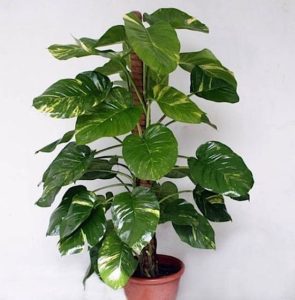
Read more about Sources of particulate matter
2. Areca Palm
Scientific name:- Dypsis lutescens
Areca palm is useful in filtering xylene and toluene from air. It works as a natural humidifier and a cooler.
Maintenance:- It can be grown anywhere in house in indirect sunlight. Exposure to direct sunlight will turn the leaf yellow. This plant indoors can grown upto 7 feet. If the plant is placed in a small container, the crowded roots will help in limiting the size of the plant. To further limit the growth, you can regularly trim it.
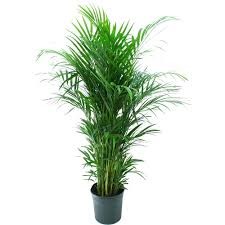
3. Aloe Vera.
Scientific name:- Aloe vera
Aloe Vera is very famous for its medicinal purposes but did you knew this plant can also clear formaldehyde and benzene from the air thus purifying it.
Along with the purification benefits it also helps cooling down the temperature thus making it a good option for summers.
Maintenance: – Aloe plant like it to be dry and warm and not wet and cold. So you should water when you see that the pot is dry.
The best spot for this plant is a sunny window. If placed in a full shady area, the plant will not thrive.
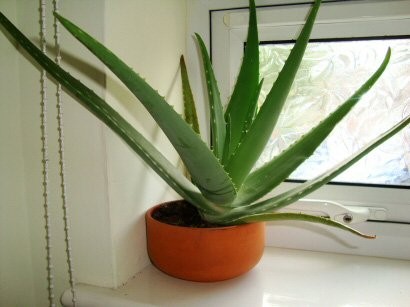
4. Indian Basil.
Scientific name:- Ocimum tenuiflorum
Commonly known as Tulsi, is one of the aesthetic and traditional plant of India. This plant has a number of medicinal properties and in addition it also helps purify the air and improve air quality.
This plant is also known to keep away mosquitoes!
Maintenance:- The best spot for this plant is sunny window and all you need to do is water regularly and watch it thrive.

5. Spider plant.
Scientific name:- Chlorophytum comosum
Spider plant gets its name because of the uniquely shaped leaves which dangle like spiders on a web.
Incorporating this plant in your house is like getting a bumper package.
This plant is known to combat all four most poisonous toxins; Formaldehyde, Benzene, Carbon monoxide and Xylene.
Maintenance:- This is low maintenance plant. All you have to care for is to use well drained soil and not to make the soil soggy.
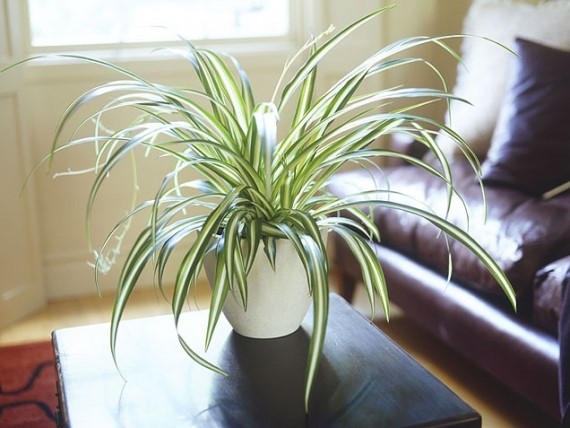
6. Snake plant.
Scientific name:- Sansevieria trifasciata
This plant is commonly knwon as Mother in law’s tongue and Saint George’s sword.
Looking for top air purifying plant with low maintenance, here is one for you.
Snake plant is identified as the top air purifying plant by NASA and they suggest you to place it near bathrooms where it can filter out formaldehyde coming from personal care products.
Maintenance: – This plant even is neglected will thrive and still give you long fresh leaves. Isn’t this low maintenance? But, the only thing to keep in mind is to plant it in free- draining soil as this plant can easily rot.
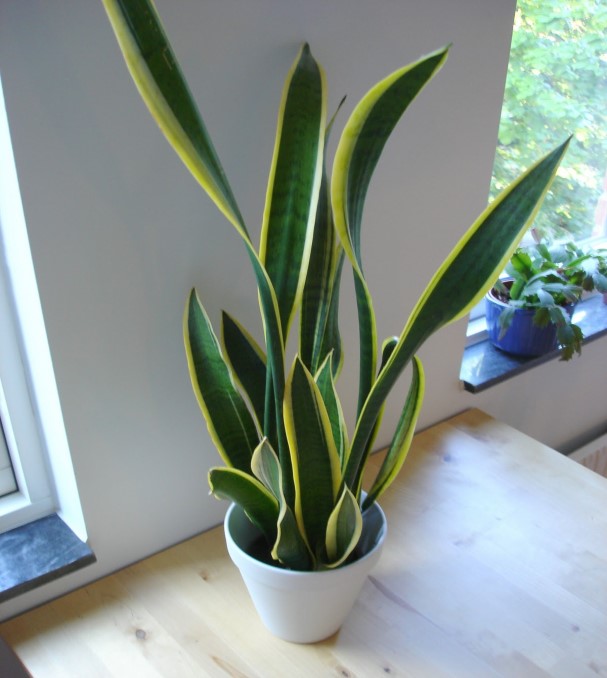
7. Peace Lily.
Scientific name:- Spathiphyllum
Want a plant which looks beautiful and provides fresh air. Here is one for you.
Peace Lily is one of the most productive in terms of cleansing the air. It will aid you get rid of formaldehyde, benzene and trichloroethylene.
Maintenance:- Needs less light and weekly watering for its survival.
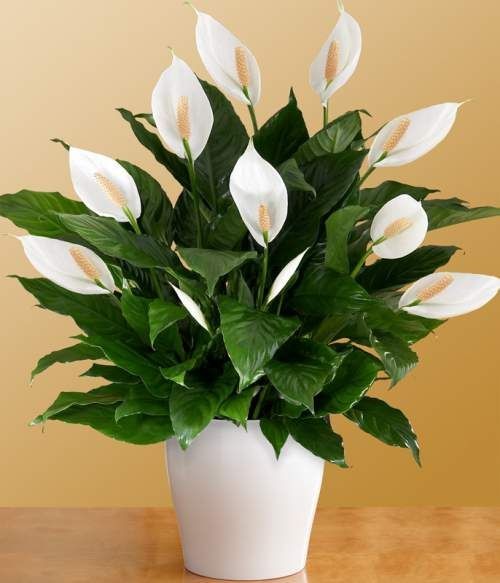
8. Song of India.
Scientific name:- Dracaena reflexa
Dracaena reflexa commonly known as Song of India or just Dracaena is one such plant which has been proved to remove a considerable amount of toxins from the environment.
The main attraction of this plant is its leaves.
Maintenance:- This plant can withstand some neglect and are easy to grow and care for. This plant doesn’t require bright light and requires quite high humidity to thrive.
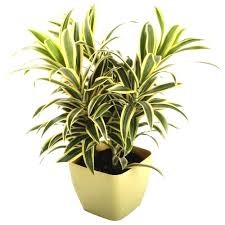
9. Weeping fig.
Scientific name:- Ficusbenjamina
Weeping Fig initially takes time to grow but once complete it can grow upto 10 feet.
It helps you clean up your indoor air by removing widespread air born toxins and by increasing oxygen levels.
Maintenance:- Plant prefers bright light and sun but can tolerate poor light and has low to moderate water requirements.
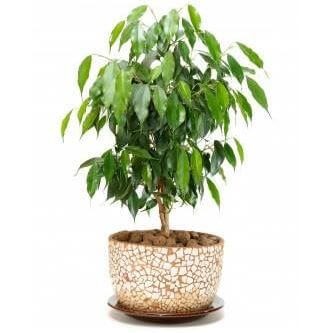
“Watching something grow is good for morale. It helps us believe in life.” – Myron Kaufmann
10. Rubber plant.
Scientific name:- Ficus elastic
This plant cleans up the indoor air by releasing high levels of oxygen and removing toxic chemicals such as formaldehyde. It has been observed that as time goes on, the rubber plant becomes even more efficient at eliminating toxic compounds from the air.
Maintenance:- The plant need to be kept in filtered light and requires frequent watering.
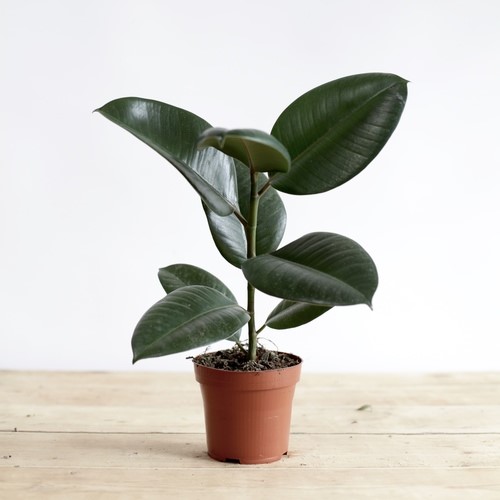
- A Snake Plant can produce enough oxygen for one person to breathe overnight.
- An Areca Palm absorbs up to 10 ppm CO₂ per hour.
- Aloe Vera releases oxygen at night, making it great for bedrooms.
- Peace Lily can remove 60% of airborne mold spores within 24 hours.
- NASA recommends at least one air-purifying plant per 100 sq. ft of indoor space.
Air Purifying Plants Indoor Low Light
Air purifying plants are a fantastic addition to any indoor space with low light conditions, as they not only bring a touch of nature but also help improve the air quality. These resilient green companions are adept at filtering out harmful toxins, such as formaldehyde, benzene, and xylene, which are commonly found in household products and materials.
Some of the top performers in low light environments include the peace lily, snake plant, pothos, and Boston fern. With their ability to thrive in dimly lit areas, these air purifying plants create a healthier and more pleasant indoor environment by effortlessly removing pollutants and releasing oxygen, allowing us to breathe easier and enjoy the benefits of cleaner air.
Indoor Plants that Clean the Air and Remove Toxins
Indoor plants play a crucial role in improving air quality by effectively filtering out toxins and purifying the surrounding environment. Plants such as the snake plant, spider plant, and aloe vera are known for their ability to remove harmful substances like formaldehyde, benzene, and xylene from the air.
These natural air purifiers not only enhance the aesthetic appeal of indoor spaces but also provide us with cleaner and fresher air, promoting better health and well-being.
Now, you know one of the best ways to have a healthier breathing area. Then why not give a try by choosing any of these 10 indoor plants and see the difference yourself!
Calculators related to Indoor Plants and health (for fun !)
Air Purification Plant Calculator
Calculate how many plants you need for better air quality.
Oxygen Release Calculator
Estimate how much oxygen your plants produce.
CO₂ Absorption Calculator
Estimate how much CO₂ your plants remove.
Low-Light Plant Suitability Checker
Select your room type to find the best plant.
Plant Watering Schedule
Select a plant to get watering frequency.
The Areca Palm is one of the best air-purifying indoor plants as it removes toxins like benzene, formaldehyde, and carbon monoxide while also increasing humidity. NASA’s Clean Air Study also highlights Snake Plant and Peace Lily for their excellent air-filtering capabilities.
The Areca Palm and English Ivy are known to reduce airborne mold spores, improving indoor air quality. English Ivy, in particular, can remove up to 78% of airborne mold in just 12 hours, making it ideal for homes with damp environments.
Plants like Spider Plant, Snake Plant, Aloe Vera, Peace Lily, and Boston Fern are highly effective in absorbing toxins, increasing oxygen levels, and reducing carbon dioxide. They also help to remove volatile organic compounds (VOCs) from indoor spaces.
Some of the best indoor air-purifying plants include Areca Palm, Aloe Vera, Money Plant, Rubber Plant, and Bamboo Palm. These plants are easy to maintain, thrive in low light conditions, and effectively remove indoor air pollutants.

I appreciate this article. Indoor plants help improve indoor air quality which is essential to keep you healthy and fit. Aloe Vera is popular for its medicinal reasons, helps cool down the temperature of your home that is a great choice for the summer season.